Andy Boyd has worked in visual effects for over 20 years. He started his career in 2000 at Glassworks. He then worked at Framestore, Method Studios, MPC before joining JAMM in 2014. He has worked on numerous projects including The Tree of Life, Wrath of the Titans and Beautiful Creatures.
What was your background?
I studied printing and 3D is something I stumbled into when I saw the Discrete Logic magazine and saw Rolling Stones on the cover and read the article about how they created the music video with the singers as giants walking around the city performing. At the time I was working in photoshop and I realized this was like photoshop on moving pictures and fell in love with VFX.
How did you and JAMM get involved on this show?
We hired Executive Producer Julie Weitzell, and Julie had been reaching out to Marvel Studios to get JAMM on a production. She received a call from one of the Marvel Executives who felt JAMM would be a good possibility for Werewolf by Night, and then Julie got me and Joe Farrell, the VFX Supervisor on Werewolf by Night, on a call and we hit it off. JAMM was the right sized studio for what Joe was looking for to create Man-Thing, where he knew his show would be well taken care of and we could all collaborate closely.
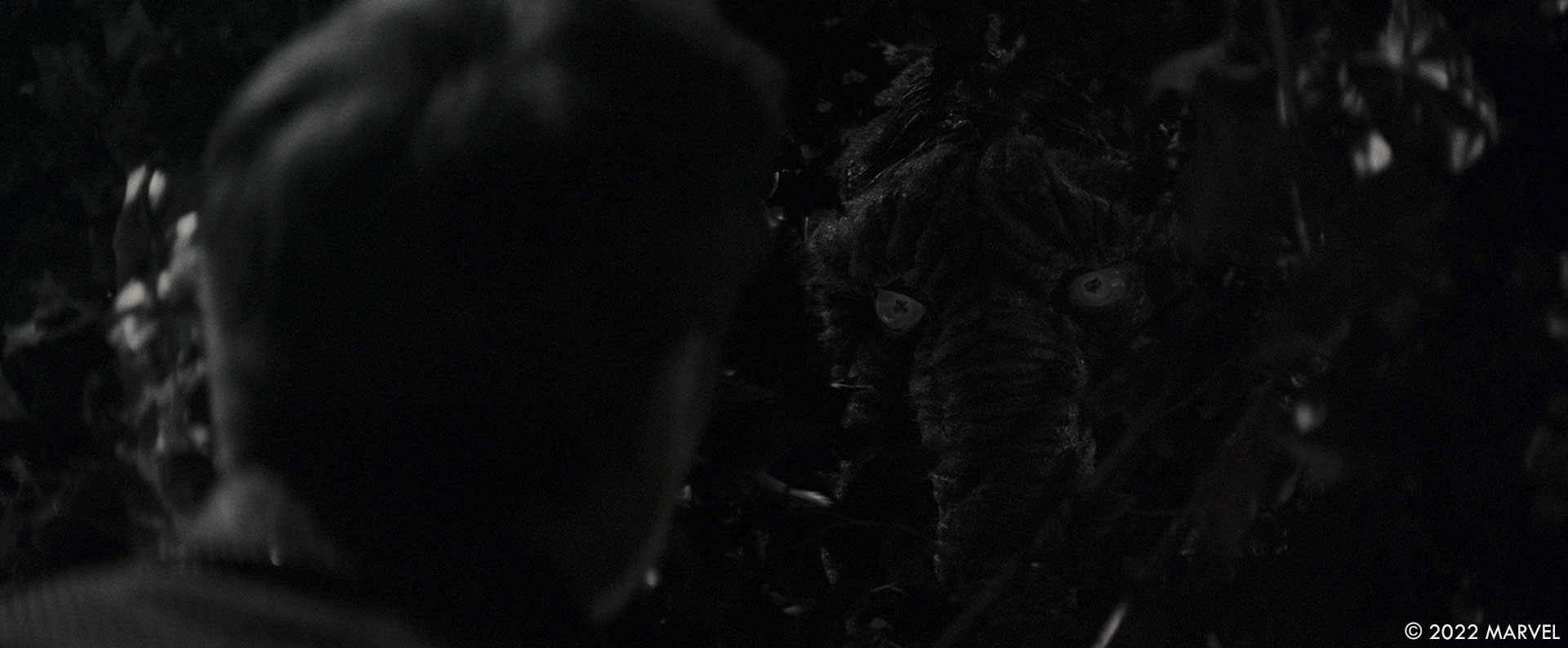
What was your feeling to enter the MCU universe?
Exciting and nerve wracking because you know you are operating at such a high level! When the Marvel executives go into a review, they review many projects one right after the other. Many reviews are of work produced by some of the most esteemed VFX studios in the industry, so you are in the mix with all the other high-end VFX studios. Being that it was our first Marvel Studios project, it was a bit nerve wracking in the beginning, but everyone gave us such positive feedback most of the time, it was thrilling!
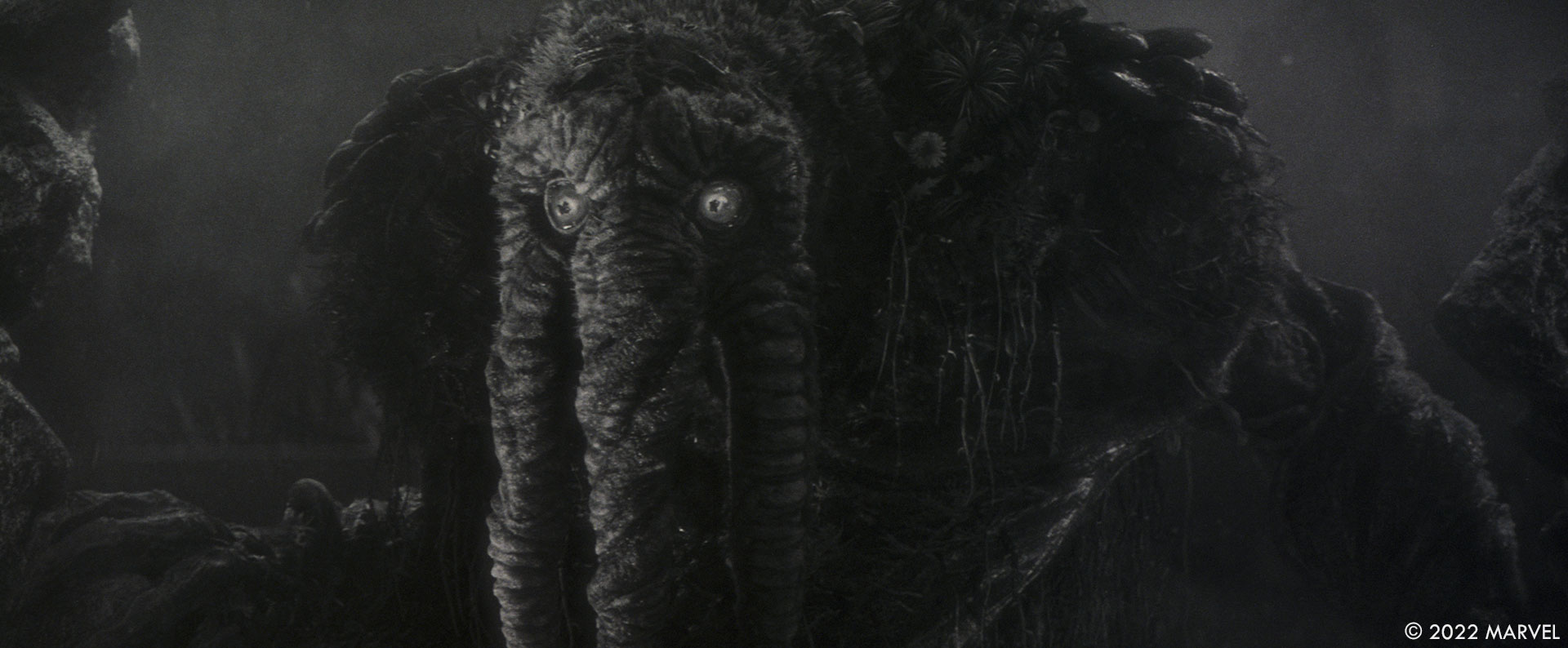
How was the collaboration with Director Michael Giacchino and VFX Supervisor Joe Farrell?
It was amazing! Joe was the person who we had our primary interactions with, and he was such a great pleasure to work with! Also, it was great being onset with Michael, he was so inclusive of the creative team! He did not shut us down, he always wanted to hear our ideas.
What were their expectations and approach about the visual effects?
Expectations were to create Man-Thing photoreal and Man-Thing was the only CG character in the show interacting with live action and live actors. Therefore, we had to make him absolutely believable.
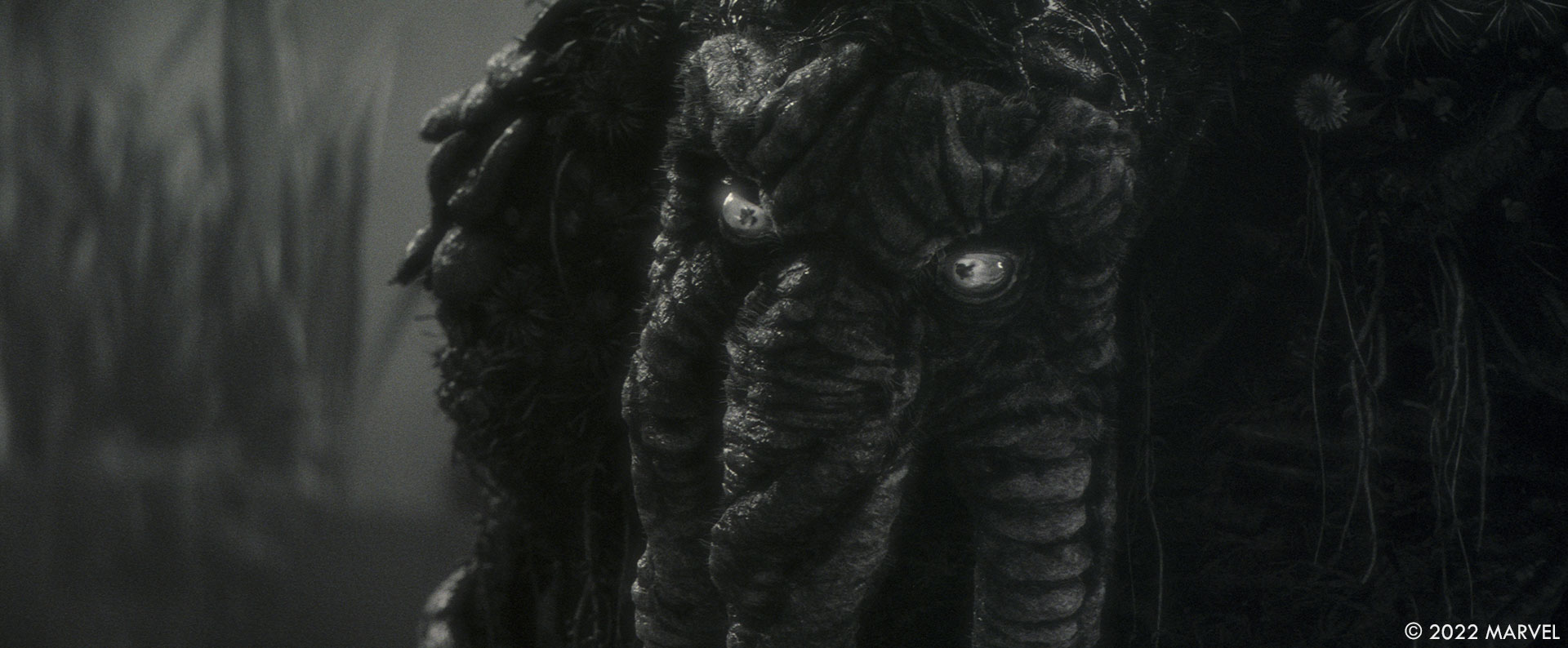
How did you organize the work with your VFX Producer?
I didn’t, Justine Pregler, my VFX producer, did all the organizing! She is amazing!
What are the sequences made by JAMM?
All the sequences with the character Man-Thing in them.
Can you elaborate about the design and creation of Man-Thing?
From the comic book inspirations, Marvel’s concept team put together some designs, which were then made into a practical model by K&B. Once production started, we realized that the K&B model was not going to be utilized as much as planned, and all the bigger action scenes were now going to be CG. Therefore, our CG model had to match what K&B had created down to the utmost detail so we could intercut shots if needed. We, of course, brought a special JAMM style to the design adding just the right balance to plant life from mushrooms to the dandelion on his chest – the last thing you might see should he dislike you!
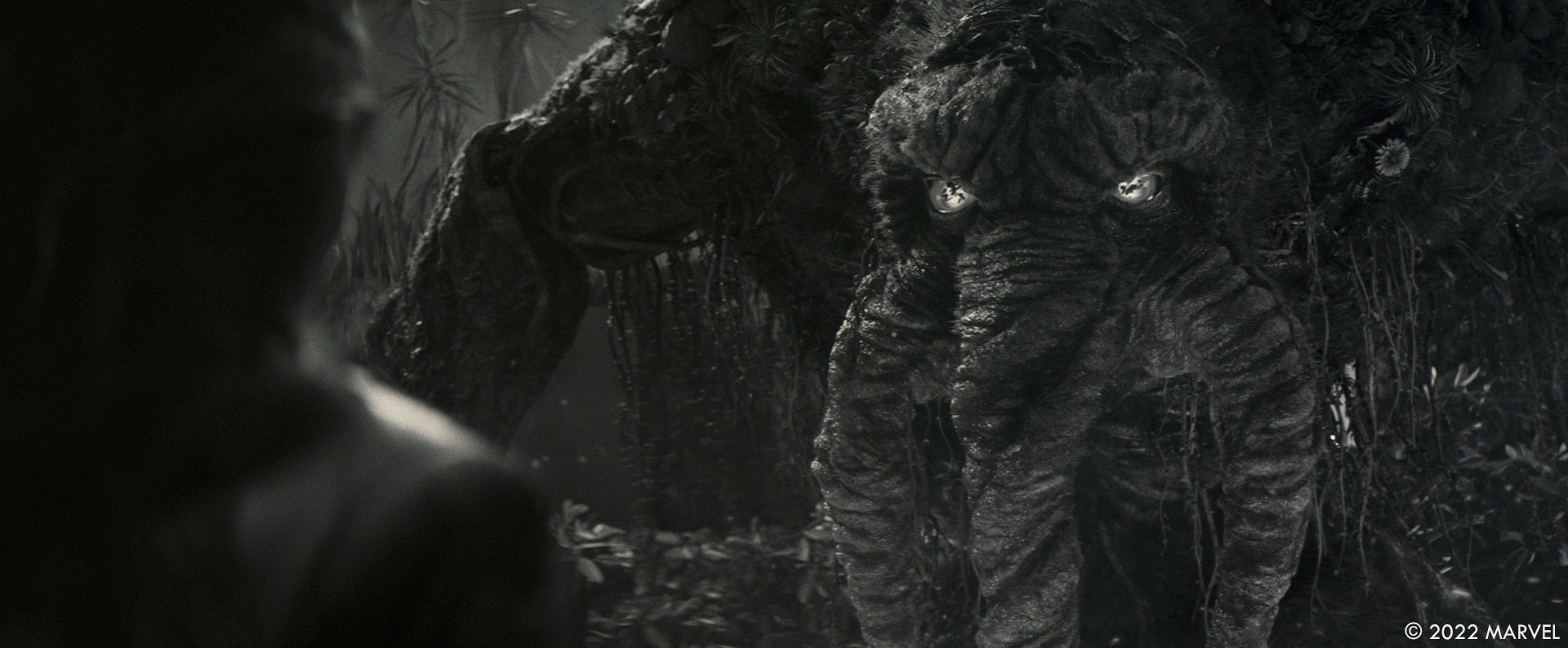
How did you handle the mix of prosthetics and digital?
We handled it by making sure our CG matched the prosthetics.
How did you handle his rigging and animation?
Answered by Stew Burris (Animation Supervisor) // Rigging and animation was done in Maya. Man-Thing’s rig was a basic biped human with a full face rig but in place of a mouth we added three stretchy spline ik tentacles with secondary offset controls and an fk peel off riding on top of that. The body had a good number of manual cluster controls for adding muscle jiggle and secondary movement. When it came time to animate. It’s always a little tricky when your character is much larger than a typical human. You want him to feel strong and powerful without losing a sense of weight and scale. The most challenging part was definitely the face tentacles. They needed to emote like a mouth up around the base and as you move down toward the ends the movement would need to take on the physical properties of a hanging tree vine. We first tried simming their movement in Houdini with hopes of speeding up our process, but he was often transitioning from very fast violent action into more soft and subtle movements. That often resulted in it just looking like an obvious simulation. Finding that balance between intentional emotion and the physics of a Hanging Vine just needed to be done by hand. Plus what animator doesn’t love The challenge of animating that kind of stuff.
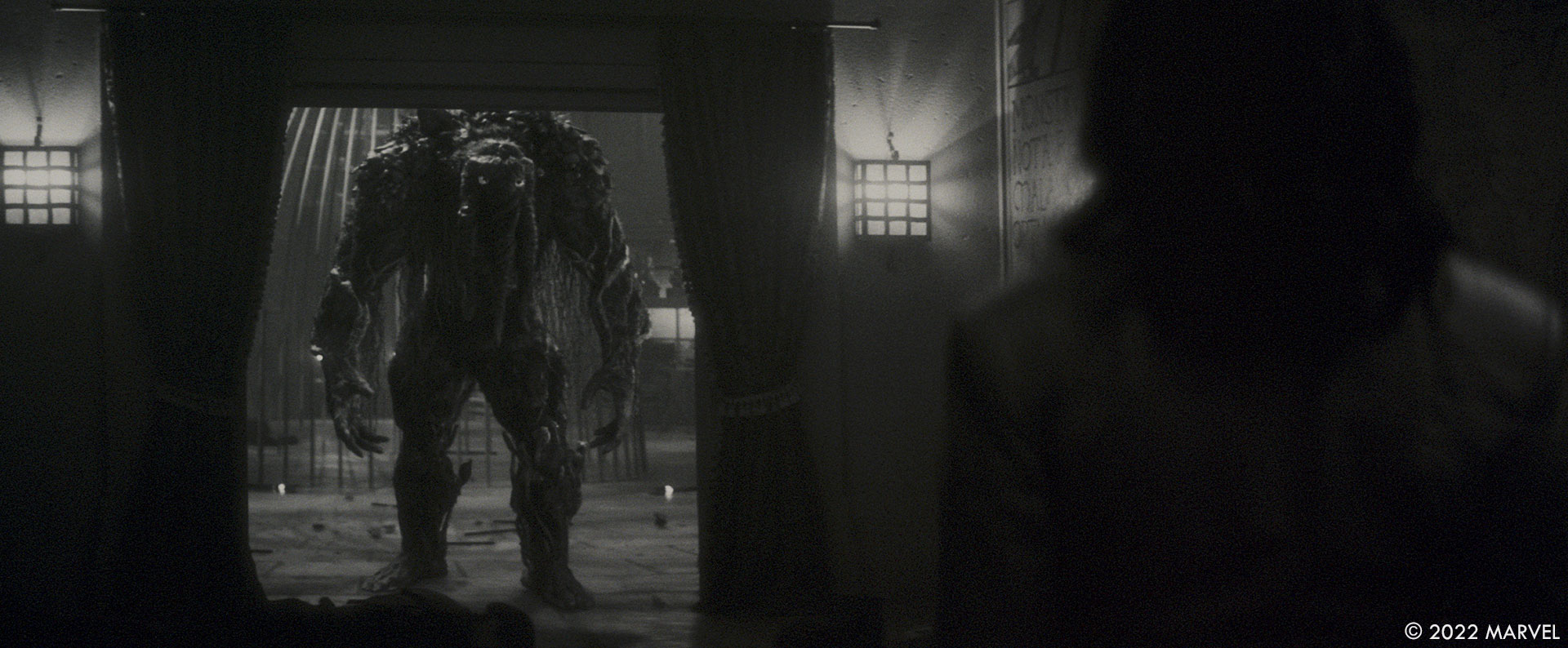
What kind of references and influences did you receive for Man-Thing?
The comic book and the K&B model of Man-Thing were what we used as references.
Can you tell us more about the eyes work?
The eyes were quite tricky because they were red, glowing eyes, but they had to look not cartoony, had to look real, not like a puppet.
How does the black and white look affect your work?
It did not affect our work, we actually produced everything in color, and then the director and the studio executives decided to try the show in black and white, and it ended up that everyone loved the look and feel of the film!
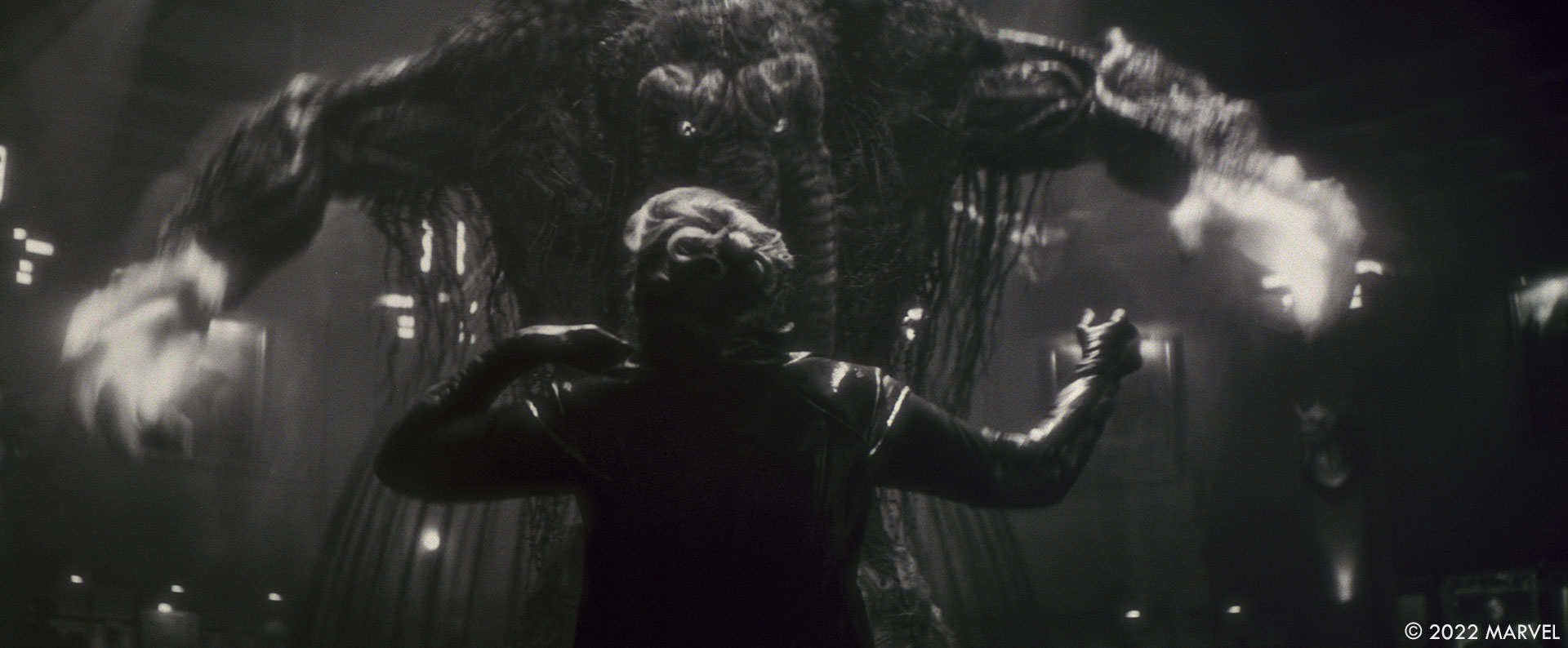
Can you tell us more about the Blood Stone?
We had to match the one that was filmed, the blood stone was basically all practical except for two shots.
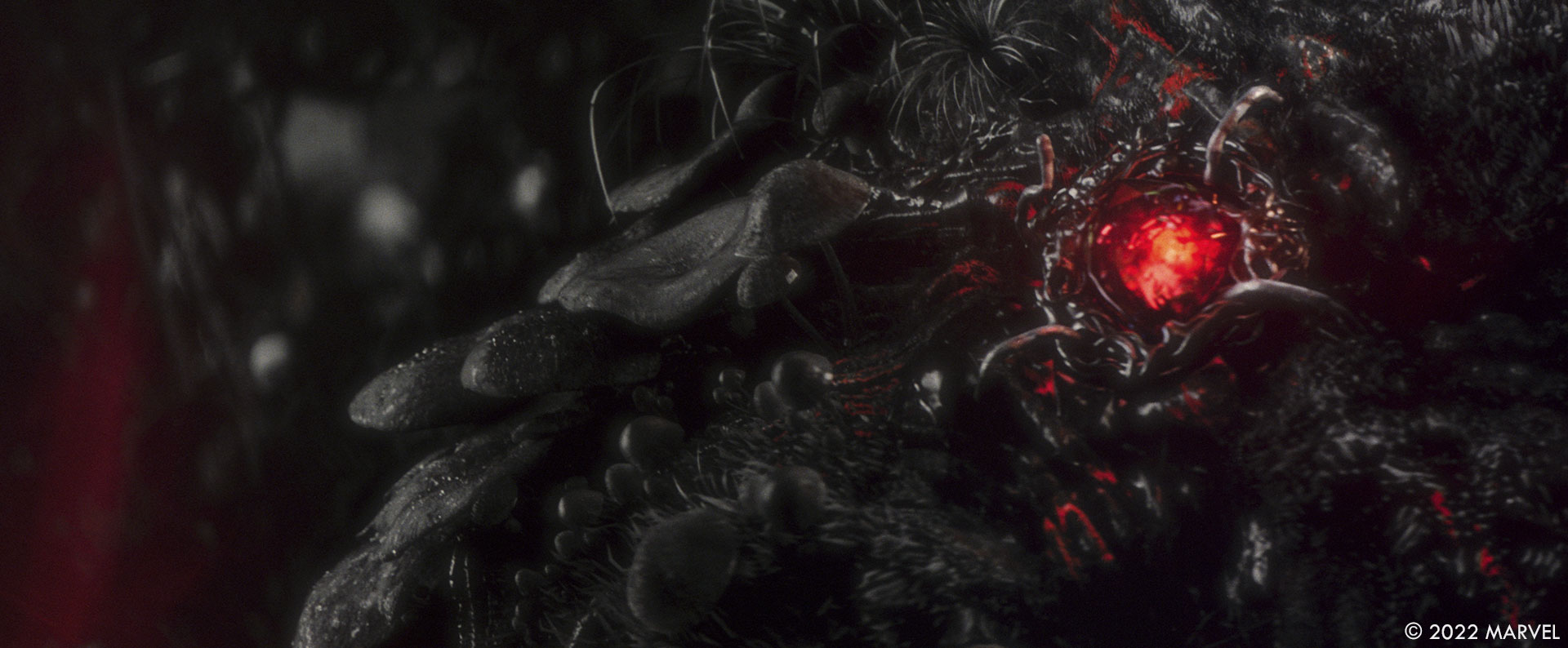
How did you create the effects for Manthings powers?
Answered by Ben Martin (FX Lead) // In Houdini we created a custom solver that emits flowing energy from Man-Thing’s arms. The solver is able to transfer the energy onto any geometry that Man-Thing is touching. We had control of the flow rate, flow pattern, hot spots, and how the underlying geometry is destroyed by the energy. All of the other simulations you see like pyro, particles, cloth sims, etc, are tied into and driven by the flow from the solver.
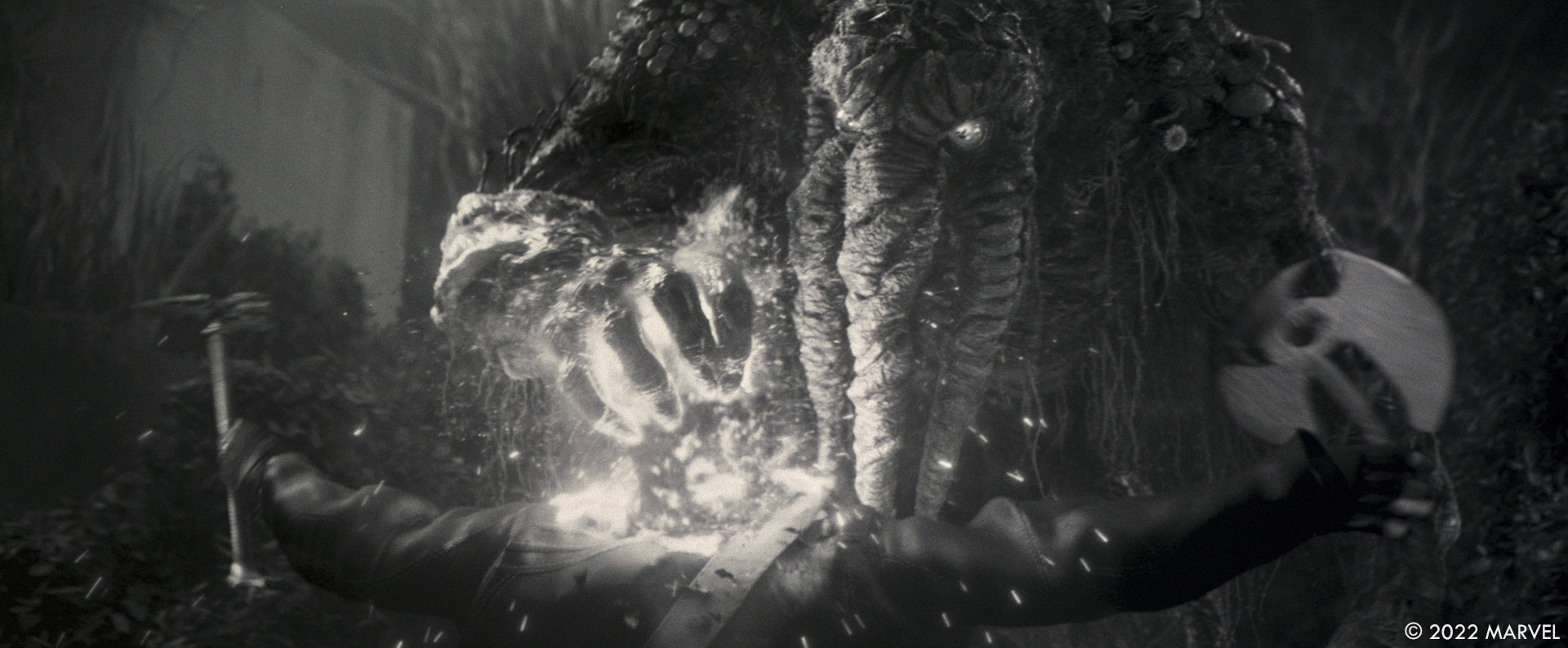
Which shot or sequence was the most challenging?
The end sequence was the most challenging because the shots were so long that you really got to study the appearance of Man-Thing in full daylight – no hiding in a quick, dark shot here!
What is your favorite shot or sequence?
Where Man-Thing’s personality changes with Ursula, where Man-Thing changes from a roaring personality to a softer demeanor.
What is your best memory on this show?
I guess my best memory is when they approved the outside shots, when Man-Thing was in daylight, and they approved everything and how he looked! We were a tad nervous how he would appear in full daylight, but everyone loved his appearance!
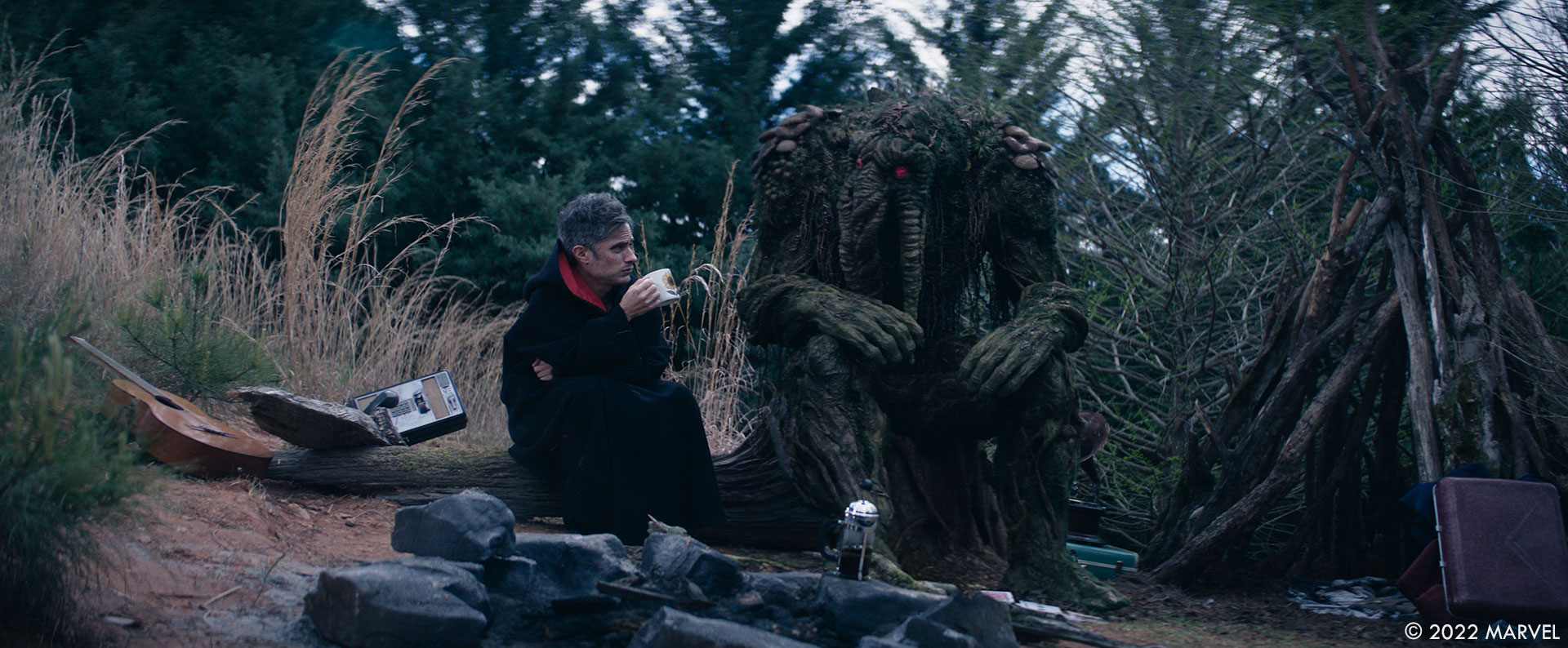
How long have you worked on this show?
Five months.
What’s the VFX shots count?
43 shots.
What was the size of your team?
13 people.
What is your next project?
A feature called A Man Called Otto starring Tom Hanks.
What are the four movies that gave you the passion for cinema?
Blade Runner (the original), and that is the one that truly gave me the passion for my career!! I have watched it so many, many times, and I still get inspired by this film!
A big thanks for your time.
// Werewolf by Night – Trailer
WANT TO KNOW MORE?
Joe Farrell: Here is my interview of Joe Farrell, Production VFX Supervisor.
Disney+: You can watch Werewolf by Night on Disney+.
© Vincent Frei – The Art of VFX – 2022




